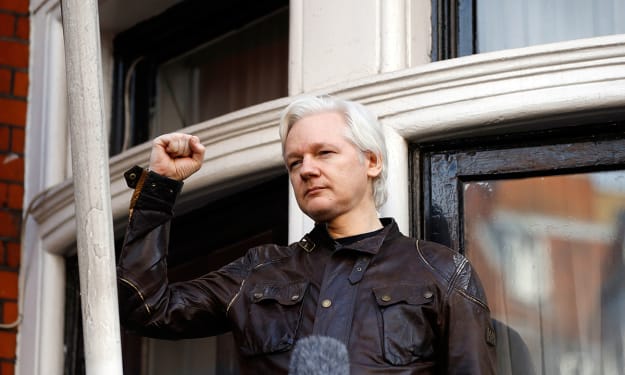Leaderless
Theory that explains movements that are not lead

Social movements contradict the path-goal theory that was initially
proposed by (Evans 1970) and developed by (House 1971). Path goal theory states that leaders change their leadership style or behavior to match the specific employee's needs and organizational environment to create a path for success and improve and motivate them to do better. The path-goal theory explains that people will have a specific behavior in any situation with a specific outcome, and it depends on the desire or wanted outcome. (House, R. J., & Mitchell, T. R. (1975).
For example, when one employee keeps failing, and the other succeeds, the leader will analyze the employee's needs who are failing and change their leadership style to help the employee develop a path specific to that employee. The employee will follow the specific path to the employee's needs and improve the employee's job performance. The path-goal theory contradicts social movements because social movements are defined as unstructured group groups that share the same social objective or problem and want to implement change to fix the issue at hand or to fight or an injustice. (Nikiporets-Takigawa, G. (2017).
There are no defined leaders in social movements and no straightforward guidelines these groups follow. The path-goal theory is contradictory to social movements because, with the path-goal theory, leaders develop a clear path to help individuals implement change. Individuals in social movements spark change in a large group of people coming together to fight for social injustice or cause. So, hence the term leader list comes into play. (https://www.britannica.com/topic/social-movement)
There are many reasons why these movements were able to motivate so many followers. The first reason is having a clear purpose and drive for change period the people of these social movements all wanted the same thing, and they all had a common shared purpose and have the same vision to fight for injustice or had a passion for changing what needed to be changed. When many people are faced with adverse situations or poor job conditions /low pay, it is easy to gain followers because the followers want the same objective or want to implement change. (Morris, A. D., & Staggenborg, S. (2004).
My theory is that social movements motivate many followers because of social causes, and the followers have a shared passion. The followers connect to the social cause making the social movement accessible in motivating individuals to participate in the movement. I think these movements are called leaderless because they do not have a leader most of the time, or the leader is not centralized to the movement—the reason is because of the social cost. The social purpose of the movement is the leader.
(Nikiporets-Takigawa, G. (2017).
About the Creator
Enjoyed the story? Support the Creator.
Subscribe for free to receive all their stories in your feed. You could also pledge your support or give them a one-off tip, letting them know you appreciate their work.






Comments
There are no comments for this story
Be the first to respond and start the conversation.